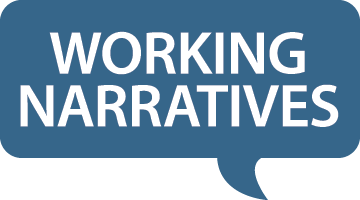3
Create an Outline or Framework
Why this story? Why now?
What does this story reveal about you or your person of interest?
What makes it your version of the story?
Who is it for? Who is it to?
Why is this important and how should your audience feel about it?
What do you want your audience to think, feel, hear, experience?
4
Prepare a Script and Rehearse
- Your script is the prose or draft of your story. It's the paper or document that expresses all of the things you're trying to convey, and how you wish to convey it.
- Scripts should consist of the words you are trying to get out of your head, and into the audience's ears. They include a few details, but the gist of what's happening should be evident in the prose and dialogue.
- Scripts don't need to be formal, however certain forms of media such as film and television have a strict set of formatting guidelines to help make the process of review easy and efficient.
- Although this is not an exact rule or parameter- often times a page of a script will translate into approximately 1 minute of screen-time.
- Scripts should contain original words and if you are using other sources of narration or audio, should include paraphrases and samples of that content.
- Scripts should have MULTIPLE revisions, you will not get it perfect on your first try.
- Scripts help set up Storyboards.
- YOU MUST READ OUT LOUD YOUR SCRIPTS
- Things that sound good on paper, often don't sound right when spoken or performed.
- Reading from a script is often boring, performing a script makes your audience engaged.
- Table Readings are a way to get everybody familiar with the project and communicating.
- Rehearsing a script leads to better writing
3. Write your narration.
What moment are you exploring in your digital story?
Why this story? Why now?
What does this story reveal about you?
What makes it your version of the story?
Who is it for? Who is it to?
How might you be different as a result of telling it?
What do you want your audience to think, feel, hear, experience?
4. Record your narration. Record your voice over using the Audio booth and edit and polish with Audacity.
Audio Recording Suggestions
5. After writing and recording your narration, read it and visualize your story. What images do you see? Do you have personal photos to reflect those images? Perhaps you can find stock photos or video clips of the images that you cannot find in a photo. Scan your photos, drawings, letters, etc.
iShowU
7. What sounds do you hear when you read your narration and look at your images. What is your story about? Relive that moment and try to remember the sounds you heard.
Copyright free sounds available at Jamendo and other sites listed below.
Creative Commons/Jamendo
Music for VideoAudioblocks
7. Storyboard. Follow the storyboard guidelines and begin piecing your story together,placing images and sounds with your narration.
Storyboard Template
Storyboard-Language
8. Edit. You will edit your digital stories using editing software called Final Cut Pro X.
Getting to Know Final Cut Pro X
19. Share and Reflect. Please write a short reflection piece on the digital story you created and the process you went through. How does an audience help you to further reflect on your Digital Story?
MediaSpace-Upload
1. What did you learn about yourself through this process?
2. How do you think your digital story will have an impact on yourself and others?



